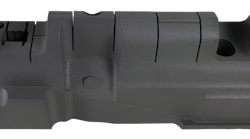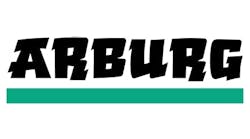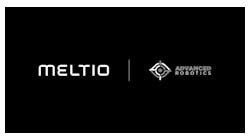Every time I visit a plastics processor, I ask if they are doing 3-D printing. The answers fall into two categories: No, our volumes are too big for 3-D printing; or, yes, we have a machine and are trying to learn.
Our Special Report, authored by senior staff reporter Bruce Geiselman starting on Page 7, shows that 3-D printing has already made the transition from limited prototyping to finished part production, sometimes in quantities of a million parts. We are seeing frequent announcements of parts being printed that previously were molded.
Companies that have not yet invested in 3-D printing may someday wish they had jumped in a little sooner. Equipment and material prices are coming down, thanks to competition among manufacturers.
One injection molder told me he did not have anyone in the plant who knew how to run a 3-D printer. Another molding shop owner told me he purchased a 3-D printer, and the 16-year-old son of a company executive came in to get it started.
Another company owner said he uses an outside service bureau anytime his company needs to have something printed. “Those guys are the experts and have the best equipment,” he said.
Companies that have invested in that first machine are mostly using it to build fixtures they need for assembly or parts handling and occasionally prototypes. But the important point is that they are building a knowledge base in the process.
A couple of plastics processors, such as Protolabs, which has a plant in North Carolina with approximately 150 3-D printing machines, are doing 3-D printing on a large scale. But most injection molders will likely never duplicate that size of an operation.
However, it is easy to envision a time when most injection molders will have a mix of injection presses and 3-D printers. After all, the business is to provide a customer with quality plastic parts at a competitive price. Some of those parts might best be printed.
There was an interesting white paper recently from FELIXprinters, a Dutch manufacturer of industrial 3-D printers. The article lists questions you should ask when buying your first 3-D printer or upgrading current equipment. Here they are in abbreviated form:
1. What do you need in terms of accuracy and surface finish? Low cost, entry-level printers offer low accuracy and lack repeatability. Very accurate machines are expensive. Buy what you need.
2. What are you building? Prototypes, concept models and assembly fixtures can be built with a lower-cost printer. Production parts, master patterns for castings and tooling require greater detail.
3. What materials will you need to process? Will your parts need to be durable, stiff or flexible, a specific color, or resistant to chemicals or water? If you will need to run different materials, pay attention to ease of purging and recalibration.
4. What build size will you need? Build platforms vary significantly, and if you are buying that first printer, you won’t likely know the size of everything you will want to print. Try to choose a platform that will accommodate the size of as many things as you think you will want to build. The rest can be outsourced to a service bureau.
5. How fast is it? The answer will usually be in inches or millimeters per hour, depending on the application, part geometry, layer thickness and material. A critical question is whether adding more parts to the build platform slows down the total build time.
6. One color or multiple colors? Some printers can handle only one color at a time, while others have full-color printing capability.
7. What are the post-processing requirements? Most 3-D printed parts require post-
processing, and it can account for 60 percent of the total part cost. The printer you select will determine the floor space, hardware and tools, and labor you will need.
8. Who will provide maintenance? 3-D printers are complicated and will need periodic maintenance and occasional repair.
9. How much does it cost? The range is probably $1,000 to more than $1 million, but there are useful industrial printers in the $10,000 to $20,000 range. Be sure to ask about additional costs for things like dedicated computers, specific power supplies, ventilation systems and air purification.
10. Are there extra costs? Some systems process only expensive resin, require solvents for cleanup and post-processing or extra equipment for recalibration.
The goal is to find the lowest-cost printer system that does not compromise on the accuracy and repeatability you need.
Ron Shinn, editor




